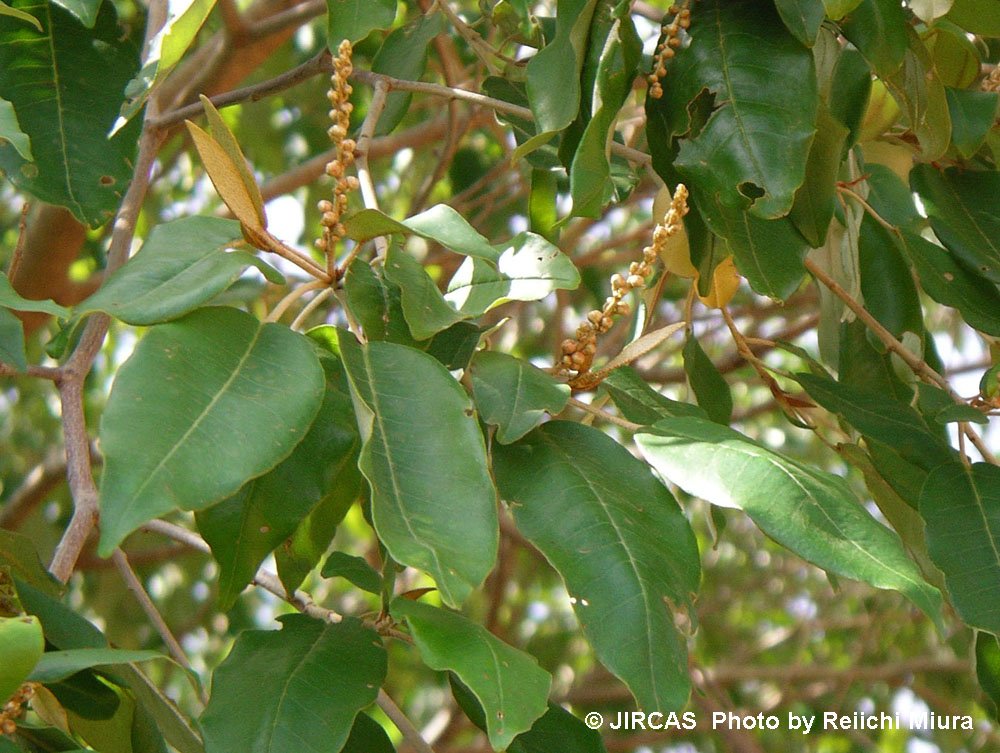Croton zambesicus

|
|
Croton zambesicus Common Names: Bushveld croton, Garlic croton, Fever
tree Scientific
Classification Kingdom: Plantae Clade: Tracheophytes Clade: Angiosperms Clade: Eudicots Clade: Rosids Order: Malpighiales Family: Euphorbiaceae Genus: Croton Species: C. zambesicus Synonyms: Croton amabilis Müll.Arg., Croton antunesii Pax, Croton microbotryus Pax, Croton welwitschianus Müll.Arg., Oxydectes amabilis Kuntze, Oxydectes welwitschiana Kuntze, Oxydectes zambesica Kuntze Morphological Description Croton zambesicus is a shrub or small tree, typically growing 3–16 meters
tall, with a spreading canopy and attractive foliage. Its key characteristics
include: · Bark: Scaly, greyish-brown, aromatic, used medicinally; exudes a
milky latex when cut, which can be irritating. · Leaves: Alternate, ovate to elliptic (5–15 cm × 3–8 cm),
silvery-green above, rusty-scaly beneath, with serrated margins; petioles 1–5
cm long (Fern, 2024). · Flowers: Small, greenish-yellow, unisexual, arranged in terminal
racemes (5–15 cm long); male flowers with numerous stamens, female flowers with
a 3-celled ovary. · Fruit: Aromatic, globose capsules (1–2 cm diameter), green turning
brown, containing 3 seeds; used as a spice in some regions. Distribution and Habitat Croton zambesicus is widely distributed across tropical Africa, thriving in
diverse habitats: · Geographic Range: Native to West Africa (The Gambia,
Senegal, Nigeria, Ghana), Central Africa (Cameroon, DR Congo), and East Africa
(Tanzania, Zambia); named for the Zambezi River region; planted in villages for
ornamental and protective purposes. · Habitat: Found in fringing forests, savanna woodlands, riverbanks,
and disturbed areas like roadsides; prefers moist, well-drained, loamy soils
(pH 5.5–7.0) with annual rainfall of 800–2,000 mm; tolerates elevations up to
1,500 m. · Ecological Role: Acts as a pioneer species in disturbed
ecosystems; supports pollinators like bees; its seeds are dispersed by explosive
dehiscence, aiding spread. Ethnopharmacology Croton zambesicus (syn. Croton gratissimus var. zambesicus) is a medicinal
plant widely used in African traditional medicine for treating malaria,
diabetes, infections, and inflammatory conditions. Scientific studies have
validated several of its traditional uses, showing that extracts from its
leaves and bark possess significant antimicrobial, antimalarial, antioxidant,
anti-inflammatory, analgesic, hepatoprotective, and antidiabetic properties.
The plant is rich in bioactive compounds such as flavonoids and phenolics,
which contribute to its pharmacological effects, including the ability to
scavenge free radicals, reduce blood glucose, and protect liver tissue. Though
generally regarded as safe at therapeutic doses, some extracts have shown mild
toxicity at higher concentrations, indicating the need for caution and further
toxicological assessment. · Pain Relief: In
Nigeria, leaf decoctions treat headaches and toothaches. Ethanolic root
extracts (27–81 mg/kg) reduced writhing by 50% in acetic acid-induced mice,
showing significant analgesic activity (Okokon et al., 2010). · Anti-inflammatory: In
Ghana, bark poultices manage rheumatism. Ethanolic leaf extracts (27–81 mg/kg)
reduced carrageenan-induced paw edema by 40% in rats, though less potent than
standard drugs like diclofenac (Okokon et al., 2010; Ajayi & Omomagiowavi,
2018). · Antimicrobial: In
Nigeria, leaf extracts treat wounds and urinary infections. Ethanolic leaf
extracts showed MIC values of 125–250 μg/mL against Staphylococcus aureus and Streptococcus species,
supporting ethnomedicinal use (Ajayi & Omomagiowavi, 2018). · Gastrointestinal Issues: In
Nigeria, leaf decoctions treat dysentery and diarrhea. Aqueous leaf extracts
inhibited intestinal motility by 30% in guinea pig models, validating use for
gastrointestinal disorders (Stark et al., 2013). · Antimalarial: In
Benin, bark infusions treat malaria. Ethanol root extracts exhibited
antiplasmodial activity against Plasmodium berghei in
mice, reducing parasitemia by 60% at 400 mg/kg (Okokon & Nwafor, 2009). · Antipyretic: In
Sierra Leone, leaf decoctions reduce fever. Ethanolic root extracts (81 mg/kg)
lowered yeast-induced pyrexia by 1.5°C in rats, confirming antipyretic
properties (Okokon et al., 2010). · Anticoagulant: In
Benin, leaf decoctions treat hypertension-related thromboembolism. Aqueous leaf
extracts prolonged clotting time in thrombin generation assays, suggesting
anticoagulant potential (Robert et al., 2010). ⚠ Toxicity Profile: Croton zambesicus contains diterpenes and milky latex, which
can cause skin irritation and mucosal inflammation. High doses of leaf extracts
(>1,000 mg/kg) showed no acute toxicity (LD₅₀ > 5,000 mg/kg) in rats but
caused mild liver enzyme elevation (ALT increased by 15% after 30 days) with
chronic use. The latex is a known contact irritant, causing dermatitis; gloves
are recommended during handling. Use is contraindicated in pregnancy due to
potential abortifacient effects and in children due to sensitivity to alkaloids
(0.01–0.05% in leaves). Ingestion of unprocessed parts may cause
gastrointestinal distress (Robert et al., 2010; Ajayi & Omomagiowavi,
2018). Additional Uses · Culinary: In Nigeria’s Adamawa region, aromatic fruits and bark are
used as spices in sauces; seeds flavor tea in Kordofan. · Construction: The pale yellow, fine-grained wood is used for hut posts,
beams in Yoruba houses, and furniture due to its durability and polish. · Cultural: Planted as a protective fetish tree in Dahomey and near
homes in Sierra Leone and Nigeria to ward off witches and evil spirits; used in
Yoruba incantations. · Ornamental: Grown in towns and villages for its silvery, rusty-scaled
leaves and aesthetic appeal. References
External Links More Pictures |
|
| Compounds of Croton zambesicus | |
| References |